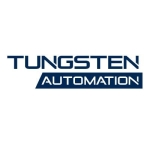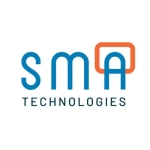We are a partner of UiPath and a system integrator for our clients.
For most clients, we tend to begin by focusing on areas with the highest potential for automation. This typically includes finance, procurement, or HR functions, with the first two being the most common choices. These areas are chosen because their processes are generally stable and repetitive, making them ideal starting points for RPA implementation.
However, our experience doesn't end with just one client. We've had numerous engagements, including with large, multi-company groups. Once one division like the "glass division" successfully implemented RPA, it often sparked interest in other divisions like the pharmaceutical division. Demonstrating a solid proof of concept makes it easier to scale the technology to diverse use cases across the organization.
Ultimately, overcoming the initial hesitation and showcasing the tool's benefits is crucial. Once the value becomes apparent, a shift often occurs, transitioning from a client-driven demand to a proactive push from various departments eager to eliminate tedious manual tasks.
While we haven't encountered any major technical roadblocks, understanding the potential for automation has been the primary challenge for users. Initially, we also faced some learning curve hurdles during the first few projects. However, as our internal expertise matured, approximately 80 to 90 percent of use cases have been implemented smoothly with minimal or no support from UiPath. It's clear that effectively identifying tasks suitable for automation versus those requiring human intervention has been the key hurdle. From a purely technical standpoint, the capabilities have been readily achievable.
While UiPath facilitates end-to-end automation, its feasibility heavily relies on the specific use case and associated tuning costs. The decision to automate isn't solely driven by cost reduction, but also by the number of tedious tasks it can alleviate for employees. Clients are often eager to free their workforce from such repetitive drudgery, especially if the task is long-standing and well-defined. In these scenarios, full automation often presents a compelling value proposition.
The UiPath user community exists on two levels. First, there's the general UiPath user community, managed by UiPath itself. This broader community offers a valuable resource for learning, sharing experiences, and finding solutions. Second, once a UiPath instance is set up within a specific client's environment, a smaller user community emerges within that client's organization. While this internal community may seem less significant, its role in supporting individual users in tackling automation challenges is crucial. By sharing their experiences and overcoming difficulties, these internal user communities can act as "roll cages" for individual functions, providing guidance and support regardless of the specific challenges encountered.
Initially, our focus was solely on on-premise solutions. In fact, up until last year, I hadn't encountered a single client who had implemented their RPA solution on the cloud. This was primarily because we catered to a mainly small business clientele. However, the landscape has shifted significantly, with more and more cloud-native solutions emerging. This shift has been driven, in part, by the cost-effectiveness of cloud-based options. One of the major roadblocks to cloud adoption in the past was the pricing of the orchestrator. While it might be suitable for supporting large client bases with thousands of users, it wasn't cost-effective for smaller businesses with only 100-200 users. Fortunately, UiPath has introduced a new approach, allowing us to purchase orchestrator instances tailored to specific user base needs. This, combined with the inherent benefits of a cloud-based platform, has made the cloud a much more attractive option compared to 2019. In conclusion, cloud computing is now a critical factor in the RPA landscape, and the adoption of cloud-based solutions has become significantly easier. This shift has opened up new opportunities for businesses of all sizes to leverage the benefits of RPA technology.
We started with five or six people trained online by UiPath and the different certification programs available in the UiPath Academy courses were helpful.
UiPath has helped to drastically reduce human error to almost zero by automating all the structured data that used to be done manually by people. This has improved the quality of work for our clients.
UiPath has helped free up employee time. Previously, we analyzed each potential use case to determine its priority. Before committing to a specific case, we built a business case to assess its potential benefits. This involved analyzing how much time automation could save, the associated cost savings, and the number of transactions it could automate. We performed this analysis during the design and assessment phases of our workflow. Following this process, we would gather the data and present it to management for approval before moving forward with automation. The amount of time saved depends on the individual use cases but they are significant. What used to take hours now takes seconds.
UiPath has delivered cost savings for our clients' organizations, not through mere implementation, but through thorough assessment. We start by demonstrating the technology's value through small-scale projects, then scale up. At this point, we gather a list of potential use cases, identify the number of users who could benefit, and pinpoint the manual tasks ripe for automation. Only then, with a business case in hand, do we proceed with full implementation. This careful approach ensures that when use cases are deployed, they translate into meaningful time savings and reduced manual workload. As a result, our clients typically see cost savings in staff reductions of at least 30 percent.
UiPath is an efficient and user-friendly tool. It allows us to record and capture actions, which it then translates into underlying code. This makes development incredibly fast. The centralized orchestration feature is also a major advantage.
Clients are often convinced by its features and marketing. In some cases, when competing with Blue Prism and Automation Anywhere, UiPath has won out due to its faster time to market. This was especially true during the early days of RPA when clients were still experimenting and wanted to try multiple vendors. UiPath's flexibility and strong support, both during evaluation and implementation, were also key factors in its success.
We sometimes use the AI functionality mainly for document scanning but at the time it was poor and had room for improvement.
The operation costs have room for improvement.
I have been using UiPath for over four years.
UiPath is a stable solution.
We haven't encountered any scaling issues, and UiPath is theoretically scalable for up to 10,000 bots. We've successfully implemented over 100 use cases for a large client with multiple subsidiaries, receiving no complaints.
The technical support is good.
The initial setup is straightforward and UiPath worked with us for every deployment.
We implemented UiPath for our clients in-house.
We evaluated Blue Prism and Automation Anywhere. Blue Prism and Automation Anywhere are not as user-friendly as UiPath and they don't have the same user community.
I would rate UiPath a nine out of ten.
Previously, we distinguished between Automation Anywhere and UiPath based on their bundled offerings. Automation Anywhere included category two AI capabilities with their RPA solution, while UiPath focused solely on RPA and didn't have much presence in the AI space at the time. Although UiPath could integrate with other AI vendors, this wasn't a significant interest for our clients.
Most deployments we completed for our clients were central.























